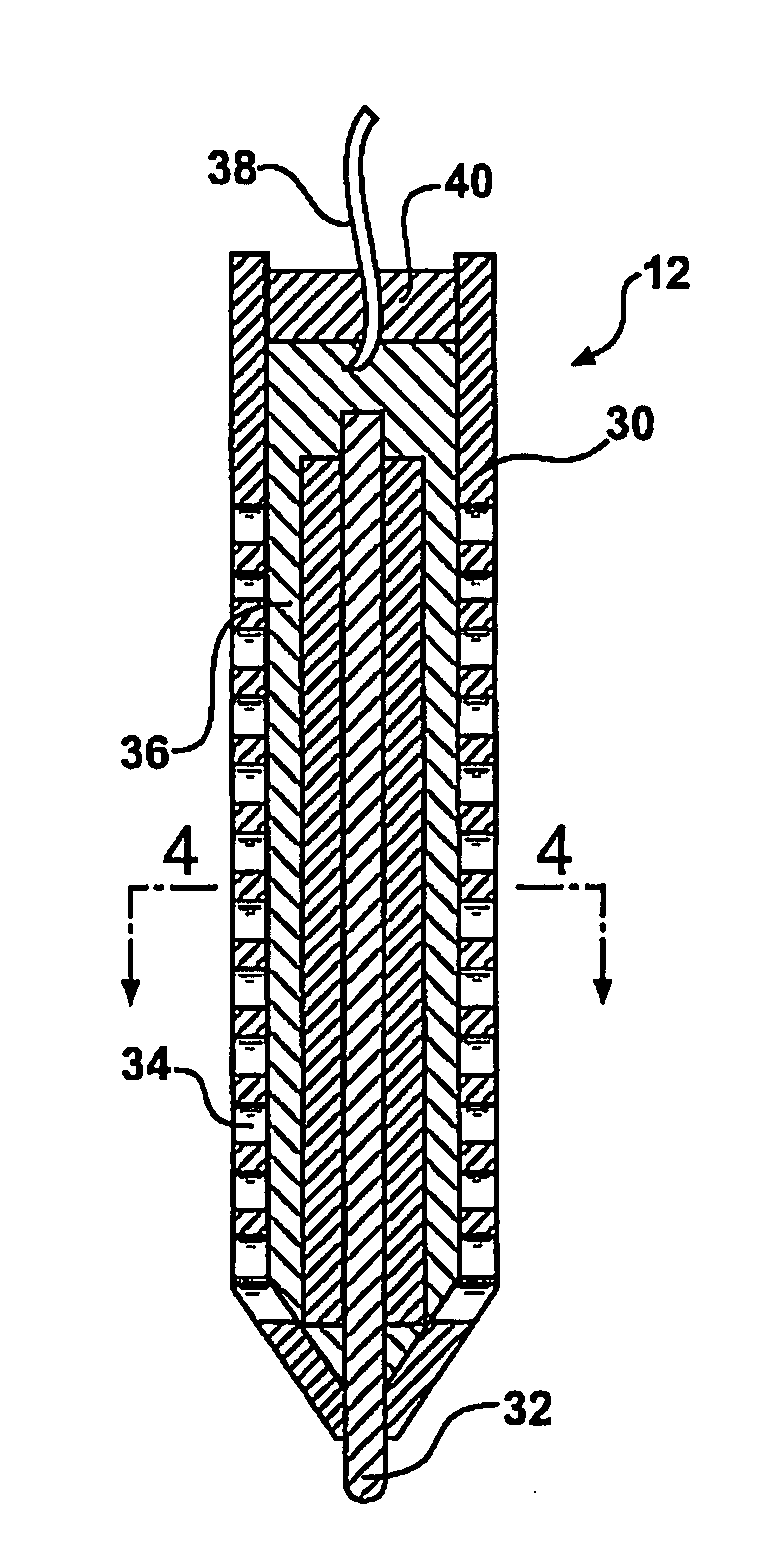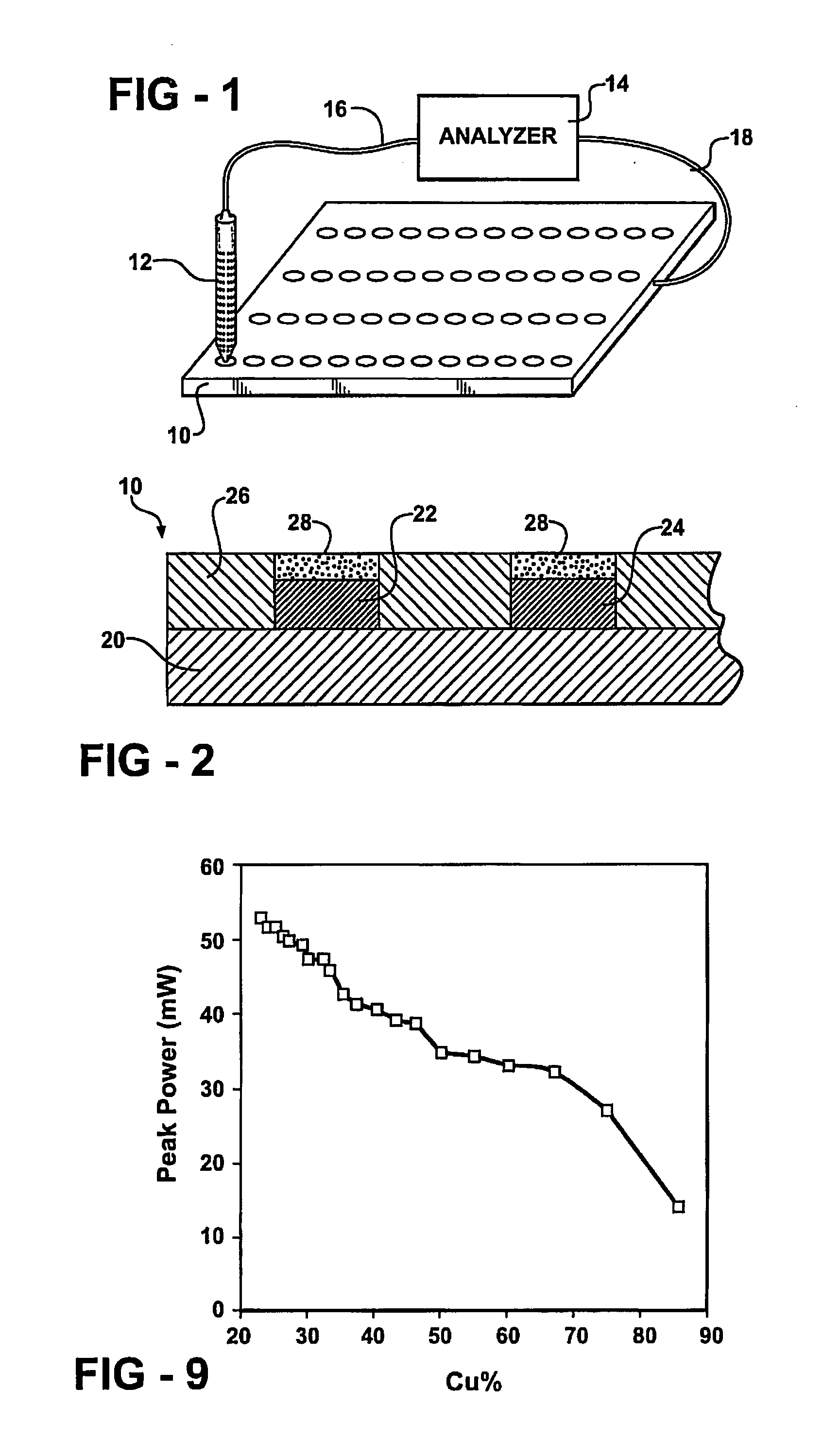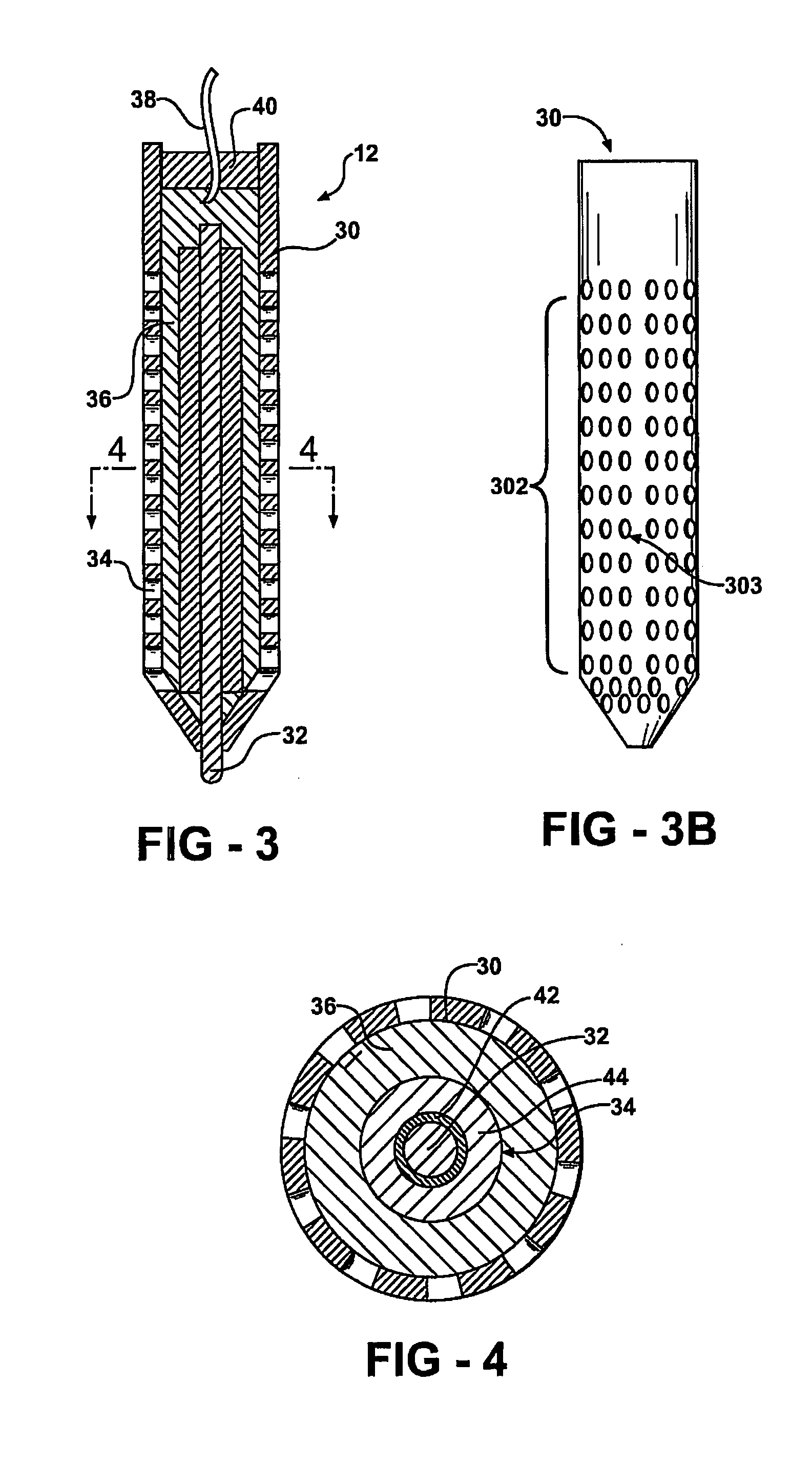Electrochemical test apparatus and method for its use
a technology of electrochemical testing and test apparatus, applied in the direction of electrochemical variables of materials, instruments, laboratory glassware, etc., can solve the problems of reducing the benefit of large-scale scanning systems, all of the foregoing apparatuses are very complex in mechanical configuration and operation, and the inherently limited optical scanning methods
- Summary
- Abstract
- Description
- Claims
- Application Information
AI Technical Summary
Benefits of technology
Problems solved by technology
Method used
Image
Examples
example 1
[0039]The first experiment was to examine the response time by a potential step method. The O2-electrode / electrolyte probe linked a zinc electrode in the working electrode array to form a zinc / air battery. The cell had an open circuit voltage about 1.5 V. The potential was stepped to 1.0 V from the open circuit voltage, and discharge current was generated and decreased slowly until reaching 28 mA. FIG. 5 shows the current variation obtained by applying a potential of about 1.0 V. About 35 seconds was needed to obtain a stable discharge current, which implies that the screening rate of the O2-electrode / electrolyte probe is 35 second per material sample.
example 2
[0040]An array of zinc electrodes was analyzed using the O2-electrode / electrolyte probe. The coating on each working electrode was about 10±2 mg by weight. FIG. 6 shows the current distribution of the 128 zinc / air cells at a potential of 1.0 V. These data are varying with deviations of ±5 mA around the mean value (26 mA). The maximum deviation is up to 19%, which is consistent with the 20% weight deviation of zinc material coated on the working electrode in the electrode array.
example 3
[0041]An electrochemical polarization curve can be measured using the O2-electrode / electrolyte probe, as long as it links a zinc electrode in the working electrode array to form a zinc / air cell (here the O2-electrode / electrolyte probe acts as the air electrode). FIG. 7 shows a polarization curve of a zinc / air cell obtained with the combinatorial method. The open circuit voltage is 1.5 V. A method of multiple-small-potential-steps was applied to gradually decrease the cell voltage in order to obtain the discharge current. It is a typical polarization curve, and we can see two parts of kinetic controlled and Ohmic controlled electrochemical processes. The low current region (current10 mA) belongs to the Ohmic controlled process. The current value is up to 100 mA at 0.2 V that is limited by the zinc electrode area (0.196 cm2). Apparently, the upper current-limit of the electrode-probe is larger than 100 mA. This current limit is good enough for combinatorial electrochemistry because th...
PUM
 Login to View More
Login to View More Abstract
Description
Claims
Application Information
 Login to View More
Login to View More - R&D
- Intellectual Property
- Life Sciences
- Materials
- Tech Scout
- Unparalleled Data Quality
- Higher Quality Content
- 60% Fewer Hallucinations
Browse by: Latest US Patents, China's latest patents, Technical Efficacy Thesaurus, Application Domain, Technology Topic, Popular Technical Reports.
© 2025 PatSnap. All rights reserved.Legal|Privacy policy|Modern Slavery Act Transparency Statement|Sitemap|About US| Contact US: help@patsnap.com



